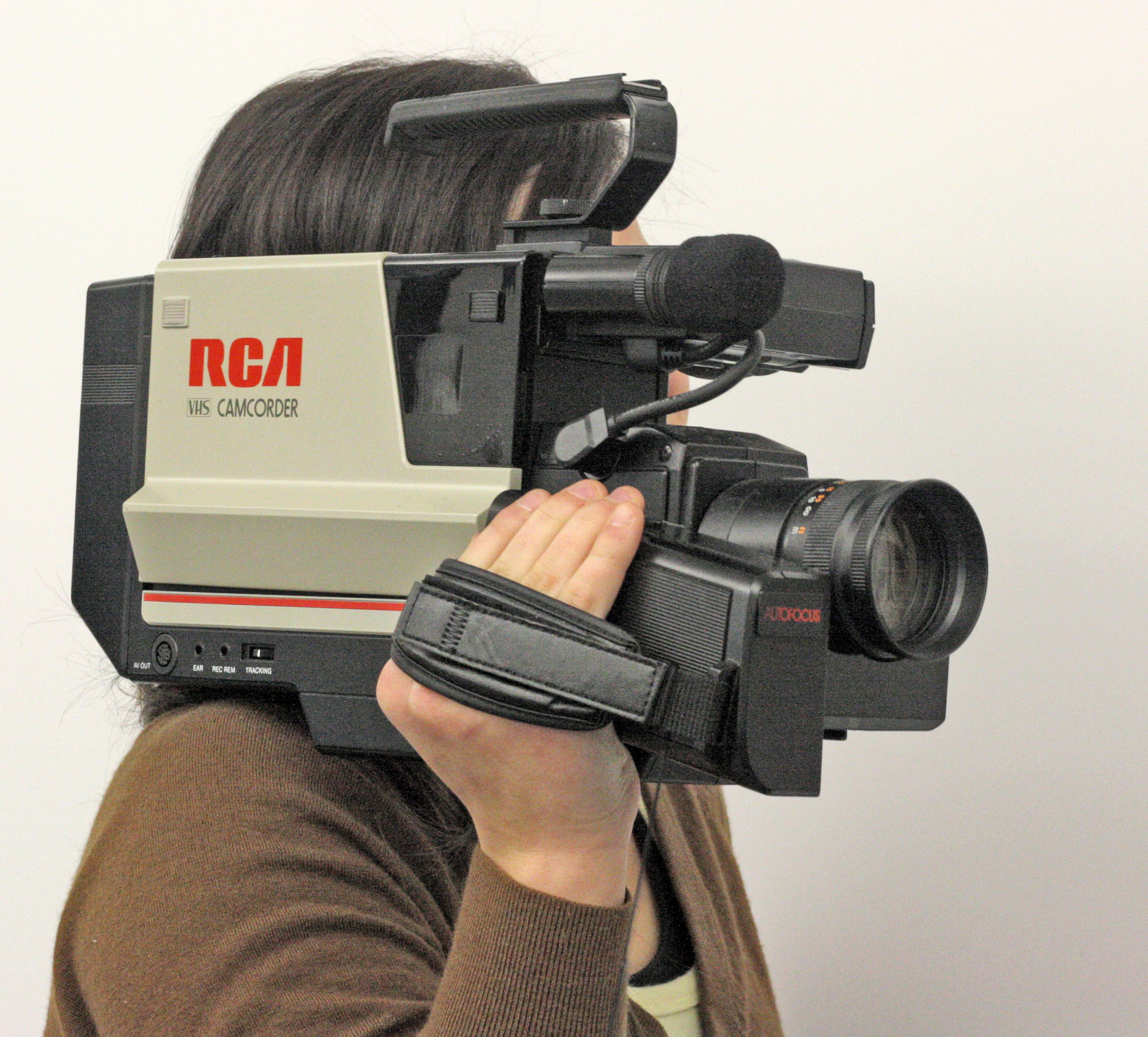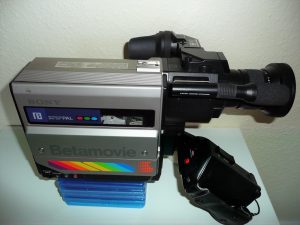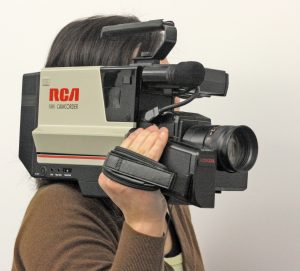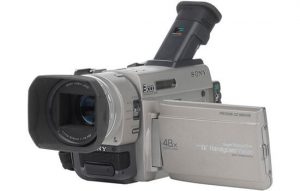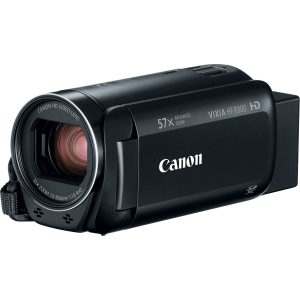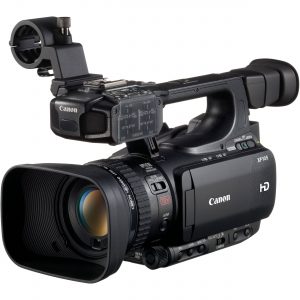A Brief History of Digital Video Cameras
The term “camcorder” has sort of an unfortunate connotation; it calls to mind the low-quality home movie cameras that were ubiquitous in the 1990s and early 2000s, before video-capable DSLRs shook up the industry. In reality, a camcorder is just a digital camera with video capture as its primary purpose – the word itself is a combination of “camera” and “recorder.” In the early 1980s, camcorders began to appear on the market, propelled by advances in home video technology, such as VCRs.
The development of home video devices allowed for two parallel changes in the world of cinema. One was the aforementioned evolution of the home video camera from the 8mm or 16mm film camera. The other was the birth of the home video market. Before the development of video tape, owning a copy of a popular movie was a much more complicated prospect. Instead, films stayed in theaters for much longer and revival screenings were fairly common. VCRs and Betamax decks allowed consumers to screen films in their homes in a simple, inexpensive way for the first time.
It also allowed them to create movies in a much more streamlined way. The first consumer video camera was released by Sony in 1983. It was a behemoth that recorded to Betamax tapes, but couldn’t play them back from the camera. Other manufacturers followed suit, some recording to Beta, some to VHS, others to speciality formats such as VHS-C. These evolved into smaller cameras with more compact media such as MiniDV, BetaSP, DVCam, and other tape-based formats. Eventually, internal hard drives and card-based media (such as the SD cards most cameras use now) were adopted.
An important distinction to keep in mind when discussing the history of the camcorder is the difference between the professional and consumer markets. Camcorder technology was developed primarily to allow consumers to capture home movies – simple recordings of family memories. The limitations in image quality, frame rate, resolution, audio fidelity, and record times were negated by the fact that these recordings were always meant to be viewed on a home television set. Filmmakers weren’t bothered by these factors, because filmmakers shot on film. It would take decades for video to become incorporated into professional production work.
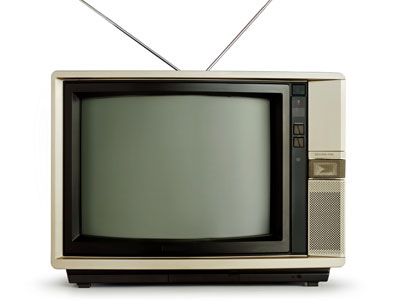
However, eventually video technology advanced to the point where professional features could be incorporated into consumer devices. I think that one big motivating factor behind this was the release of HD video-capable DSLRs – which were always intended for professional use, but were still accessible to home users. In the last decade or so, we’ve seen camcorders with different frame rate options, high end audio inputs and controls, interchangeable lenses, and, of course, HD recording and beyond. The video camera – the camcorder – has slowly evolved into a device that is suitable for professional work.
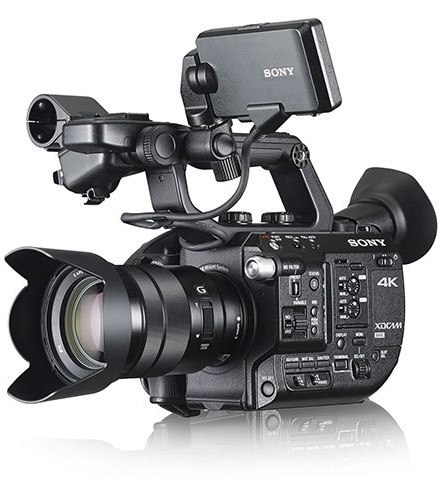
Benefits of a Dedicated Video Camera
I’ve spent a fair amount of time over the last few weeks extolling the virtues of hybrid cameras and talking about how revolutionary video-capable DSLRs were for the world of filmmaking. With all of that in mind, is there still a place for the humble camcorder? If video/stills hybrid cameras are so good, do we still need dedicated video cameras?
While the market has certainly shifted over the last ten years, we definitely still do need video cameras. There are two major areas where video cameras are still – and may always be – vastly superior to hybrid cameras: handling and audio.
Handling is something we’ve touched on before. A stills camera – and, therefore, a hybrid camera – was designed to capture one image at a time, a fraction of a second in length. Video cameras need to capture footage for several seconds, several minutes, or longer – and they need to remain steady as they do so. That’s why video cameras have body designs that are different from stills cameras. The best example of this difference is in ENG-style cameras. ENG-style cameras are designed for news gathering, so they need to be sturdy, versatile, and adaptable for long shooting days. ENG-style cameras generally sit on the operator’s shoulder and have a prominent viewfinder.
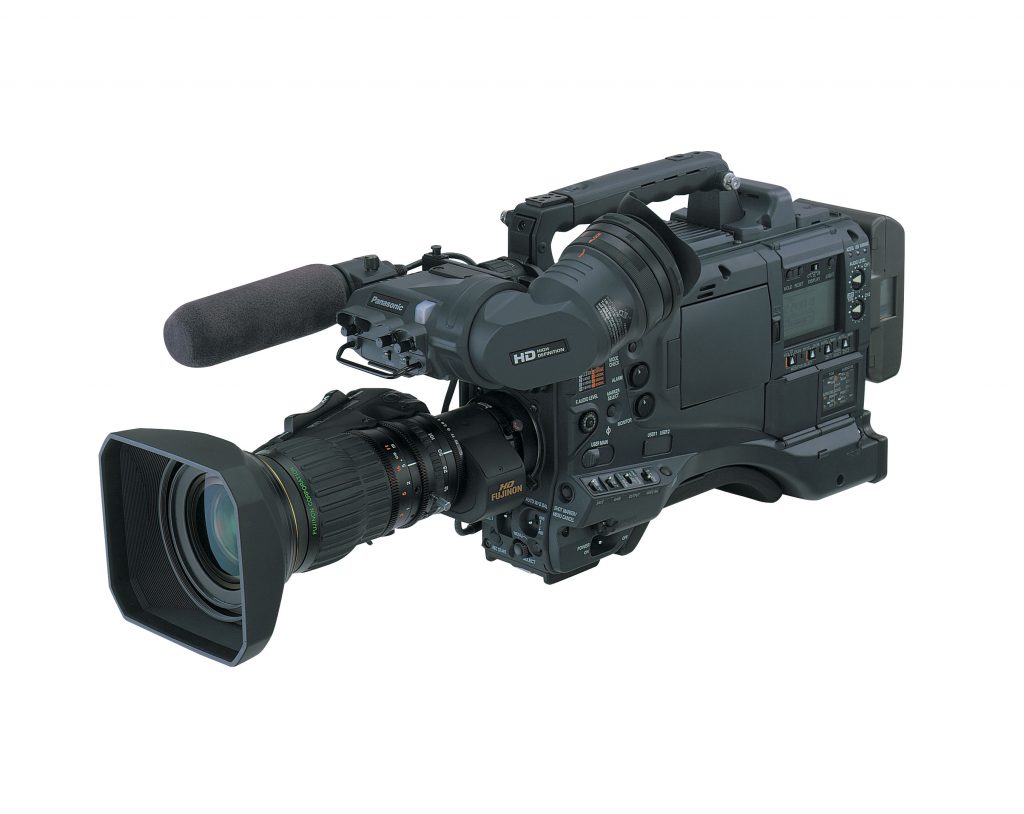
The handling benefits of a dedicated video camera also extend to its external controls. Most video cameras have a number of dials, knobs, switches, and buttons to help the operator quickly change the record settings. White balance, gain (ISO), audio levels, peaking, zebras, focus magnification, and playback options often have dedicated controls. Internal neutral density filters – which are possible because of the larger body of a camcorder – also have dedicated controls on many video cameras. On hybrid cameras, these features (when they are present at all) are usually buried somewhere in the menus.
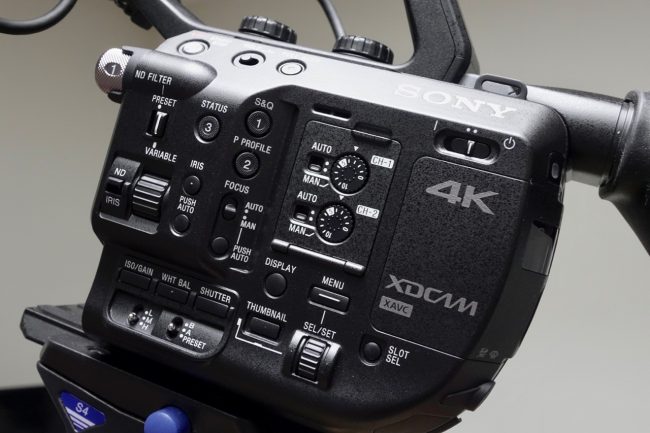
As I previously mentioned, audio is another huge differentiator between hybrid cameras and video cameras. Since stills cameras were never originally intended to capture sound, audio has always been something of an afterthought on hybrid cameras. A few hybrid cameras – such as our Sony RX10 II – have accessories that increase the audio capabilities of these cameras, but a dedicated video camera is still usually better in this regard. A good camcorder will feature multiple XLR inputs, phantom power, independently adjustable levels, mic and line level settings, on-screen meters, and mounting points for on-camera microphones. On a hybrid camera, you are lucky if you have both a 3.5mm microphone jack and a headphone jack.
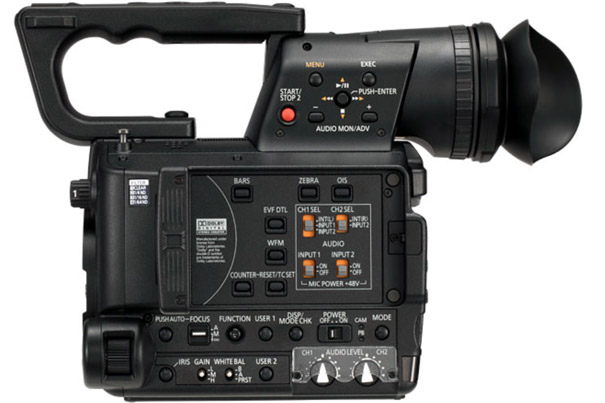
The more robust audio features present on a video camera mean that it is often possible to record sound directly to the camera itself. On hybrid cameras, it’s often wisest to use an external audio recorder in order to compensate for the functionality missing on the camera itself. This obviously makes the entire process more complex and may even require additional crew members. For single operators, a dedicated video camera is often the most efficient choice.
